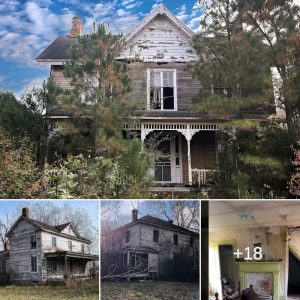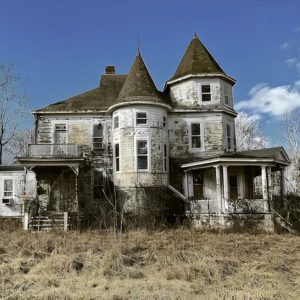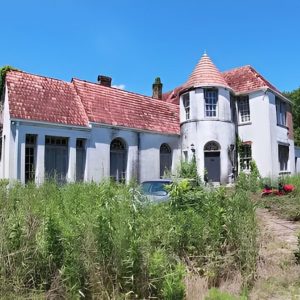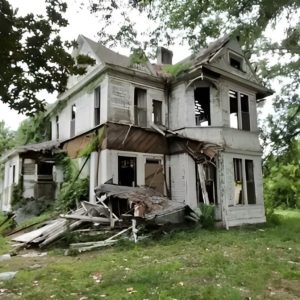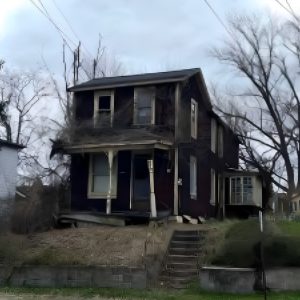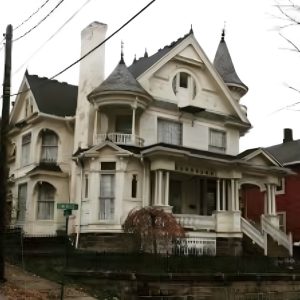Home life in the Americas through history

Despite being a relatively young nation, the land mass of the Americas has been populated by humans for at least 13,000 years – and some say more than 20,000 years.
From Native American wetus to Swedish colonist log cabins, these early American homesteads are packed with centuries of stories. Join us as we step back in time to explore some of the oldest homes in America. Click or scroll to find out more…
Native American homesites
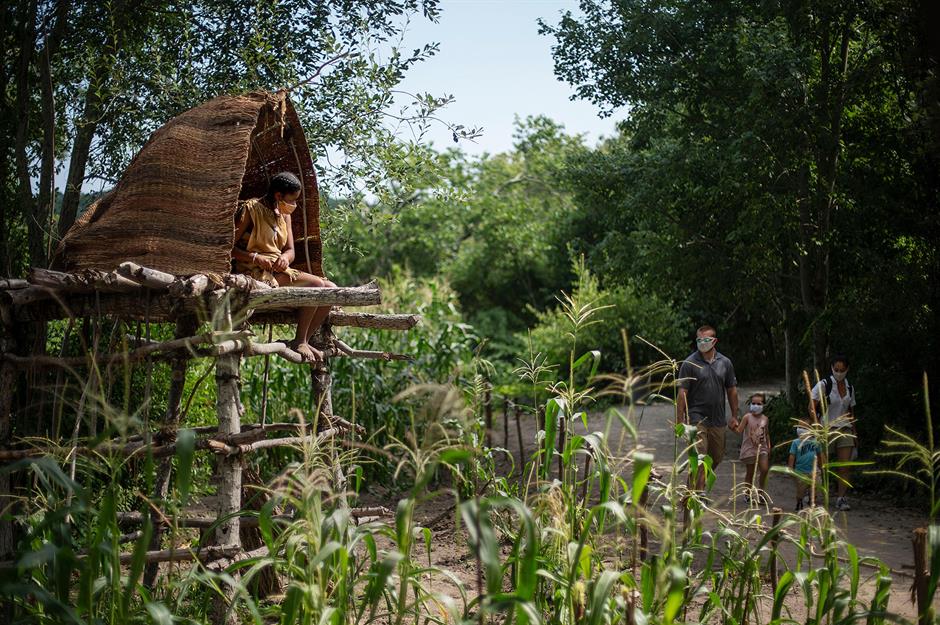
Associated Press / Alamy Stock Photo
There are several theories on how they first arrived but evidence supports that Homo Sapiens crossed over the now-disappeared Beringia Land Bridge, from Asia and Siberia to Alaska. Known as the Clovis people, their bone and stone tools were discovered at a site in New Mexico and fossils show they were contemporary with ‘megafauna’ or giant animals of the Ice Age, including mammoths, dire wolves, huge turtles, camels and giant bison.
While very few of the original structures remain, the first American homes were the dwellings of the Native American peoples. Every settlement was different, utilising the natural materials that were at hand and adapting to the weather conditions of the region. Most settlements were comprised of small villages that utilised distinctive architectural styles such as tipis, longhouses, chickees, hogans or pueblos.
Historically accurate recreations

Lidine Mia (CC BY-SA 4.0) via Wikimedia Commons
The Northeast’s native Wampanoag tribe favoured wetu structures – domed huts made by covering a frame of red cedar sticks with tree bark or mats of woven reeds.
These shelters were frequently seasonal or temporary, and often provided housing for more than one family. While there are no original wetus still standing, the Plimoth Patuxet Museums in Plymouth, Massachusetts boasts a recreation of a traditional Patuxet homesite, featuring historically accurate wetus to allow visitors to step back into Native American history.
Taos Pueblo, Taos, New Mexico: Approximately 1000-1450

Nick Fox / Alamy Stock Photo
One of the oldest remaining homesteads in the United States, Taos Pueblo is an ancient settlement belonging to the Native American Puebloan people. The exact date of the dwelling is unknown, though it is believed to have been constructed between 1000 and 1450.
Located about an hour north of the city of Taos, New Mexico, Taos Pueblo is one of the oldest continuously inhabited communities in the US and has been declared a UNESCO World Heritage Site.
Taos Pueblo, Taos, New Mexico: Approximately 1000-1450
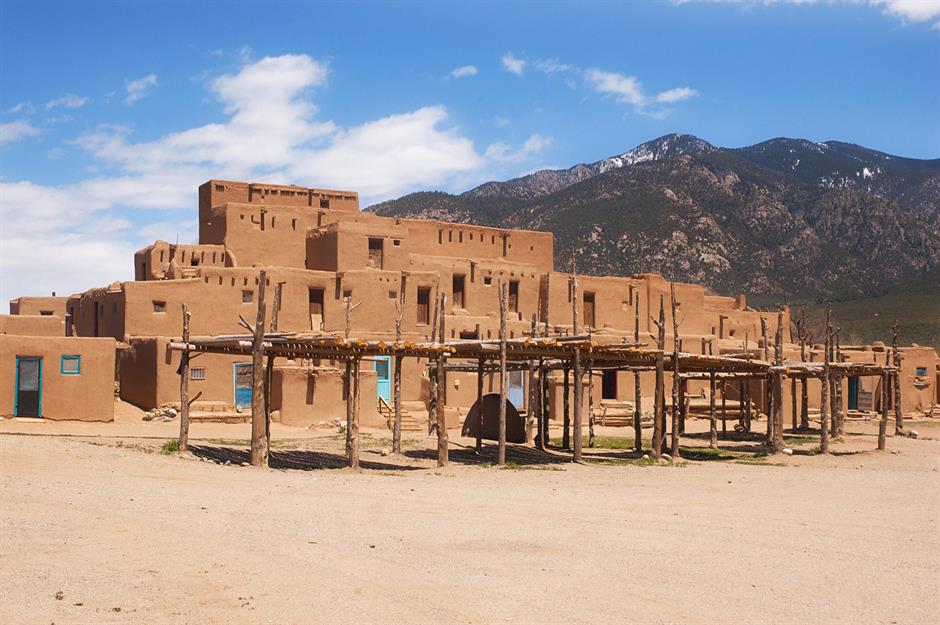
fotogal / Alamy Stock Photo
The pueblo is comprised of two multi-storey residential complexes, one constructed on each side of the Rio Pueblo. The complexes, known as hlauuma (north house) and hlaukwima (south house), are believed to be of similar age and were designed to house multiple families.
The pueblos were built from adobe – earth mixed with straw and water – which was either poured into forms or sun-baked into bricks to create walls, which are several feet thick in places.
Taos Pueblo, Taos, New Mexico: Approximately 1000-1450

Panoramic Images / Alamy Stock Photo
The roofs are supported by thick timbers, called vigas, and comprised of smaller pieces of wood placed side by side, then covered by thickly packed dirt.
The exterior walls of the pueblo are continuously replastered with thick layers of mud, a technique which has enabled the structure to endure for so many centuries.
Taos Pueblo, Taos, New Mexico: Approximately 1000-1450

Elisa.rolle / Wikimedia Commons [CC BY-SA 3.0]
Inside, the pueblos contain multiple homes packed side-by-side, with private entryways but sharing common walls. Approximately 150 people live in the pueblos year-round, according to their website, with many others owning more modern homes situated elsewhere within the protected Pueblo land.
Acoma Pueblo, Albuquerque, New Mexico: Approximately AD 1
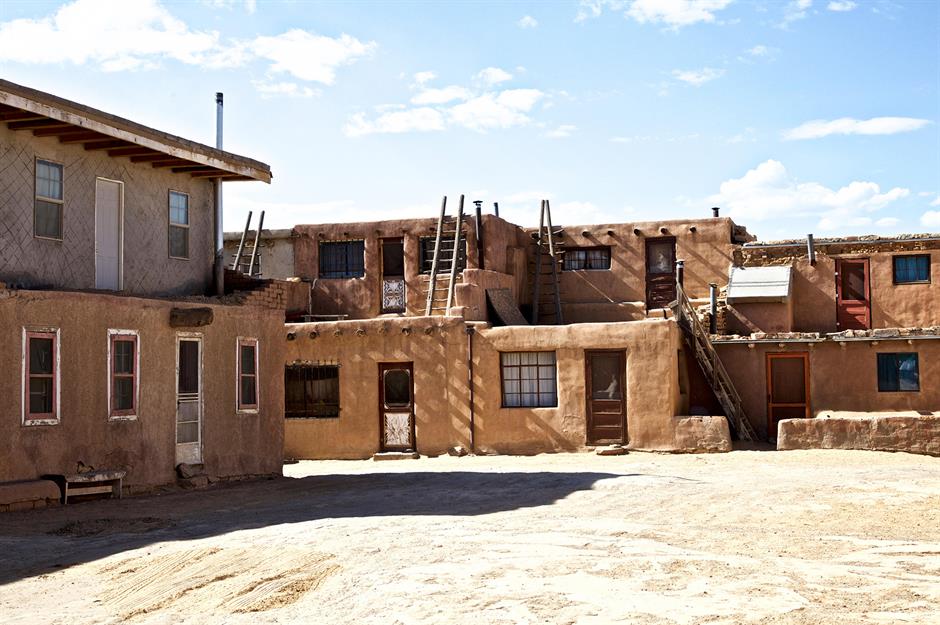
Danita Delimont / Alamy Stock Photo
Another of the oldest continuously inhabited settlements in the US, Taos Acoma is an ancient Native American village comprised of four communities and is today contained largely within the Acoma Indian Reservation.
The pueblo, which has been designated a National Historic Landmark, is believed to be approximately 2,000 years old, according to local tribal tradition.
Acoma Pueblo, Albuquerque, New Mexico: Approximately AD 1

Danita Delimont / Alamy Stock Photo
Today, Acoma Pueblo comprises approximately 300 two- and three-storey adobe buildings across the 365-foot mesa. The upper storeys of these buildings are accessed by wooden ladders, a traditional defence mechanism used to prevent home invasion.
Customarily, these houses had no doors or windows, making the ladders the only means of entry. Consequently, the building’s upper stories were residential, while their ground floors were used for storage.
Acoma Pueblo, Albuquerque, New Mexico: Approximately AD 1

Although roughly 30 people call Acoma Pueblo their full-time home, the buildings have no running water, electricity or sewage disposal. They do, however, possess baking ovens and two natural cisterns where water can be collected.
The buildings themselves can be reached using narrow footpaths carved into the face of the mesa; these footpaths also connect the homes to the village plaza, the spiritual centre of the town.
The Fairbanks House, Dedham, Massachusetts: 1637
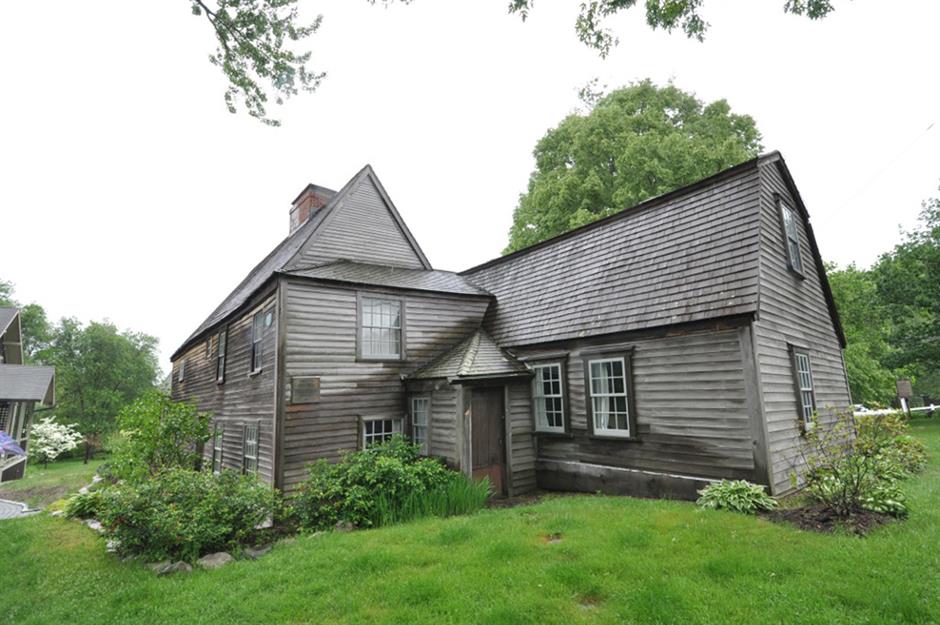
Magicpiano / Wikimedia Commons [CC BY-SA 4.0]
The oldest surviving timber-frame house in North America, the Fairbanks House in Dedham, Massachusetts was built in 1637 for Puritan settler Jonathan Fairbanks and his wife Grace.
The Fairbanks family occupied the homestead for eight generations, until the early 20th century. Today, the home is owned and operated as a house museum by the Fairbanks Family in America, a non-profit organisation.
The Fairbanks House, Dedham, Massachusetts: 1637
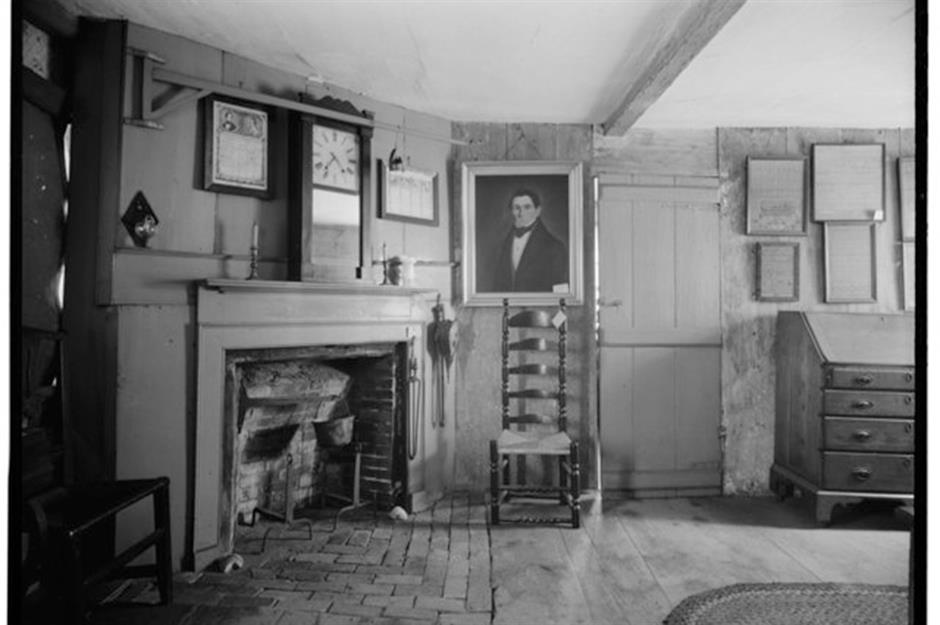
Historic American Buildings Survey / Wikimedia Commons [public domain]
The home was initially built in the traditional timber-clad colonial style by Jonathan Fairbanks himself. In 1633 Fairbanks travelled across the Atlantic from Yorkshire to Boston, where he had acquired farmland with the intention of building a new life for himself and his family.
The house was originally a two-storey dwelling encased in oak and cedar cladding, featuring a gabled roof and a central chimney. However, as the family grew and architectural styles developed, the house was expanded multiple times to keep pace.
The Fairbanks House, Dedham, Massachusetts: 1637

Stanley Mixon / Wikimedia Commons [public domain]
The most significant additions to the house took the form of a west wing, built in the mid-17th century, and an east wing, assembled in the late 18th century.
An expanded parlour and small entry space were also added in 1800, as well as a two-room addition to the west side of the house. Finally, in 1881, a privy was added to the rear of the west wing, to keep the home up-to-date with all the advancements of modern plumbing.
The Fairbanks House, Dedham, Massachusetts: 1637
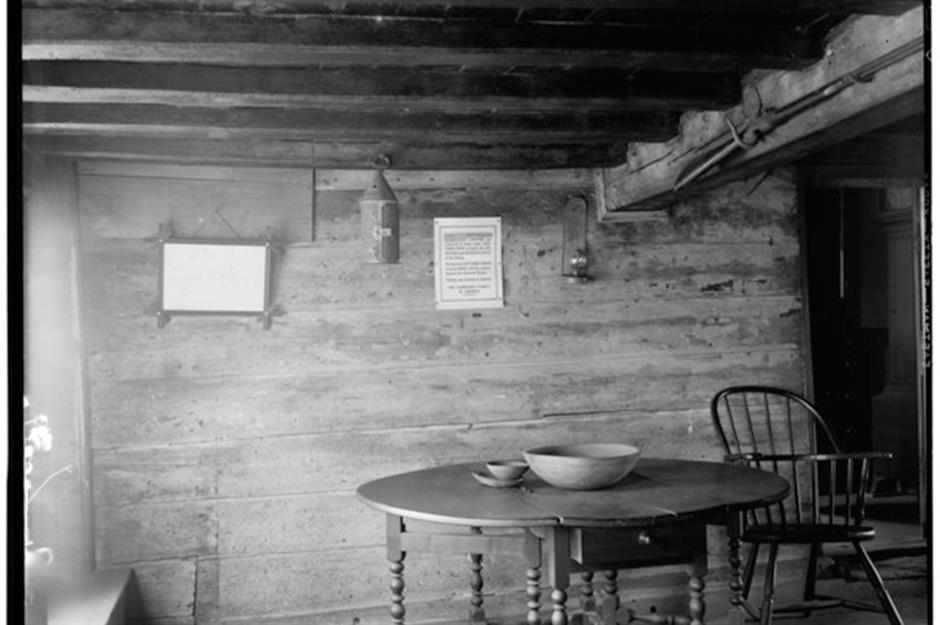
Stanley Mixon / Wikimedia Commons [public domain]
The home was converted into a museum in 1905, and in 1961 was declared a National Historic Landmark and added to the National Register of Historic Places.
Abbott Lowell Cummings, Professor Emeritus of American Art at Yale University, described the house as “a veritable storehouse of information concerning the small handful of houses which survive from this early period.”
Cummings added that it has survived in an “unbelievably unspoiled condition”, preserving “such a high percentage of original features”.
The Henry Whitfield House, Guilford, Connecticut: 1639

LEE SNIDER / Alamy Stock Photo
The oldest stone house in America and the oldest home in Connecticut, the Henry Whitfield house was built in 1639, just before its surrounding town of Guilford was settled.
The house was built for Henry Whitfield, a Protestant minister who fled religious persecution in England and was the first house to begin construction after the arrival of the Guilford colony settlers.
The Henry Whitfield House, Guilford, Connecticut: 1639
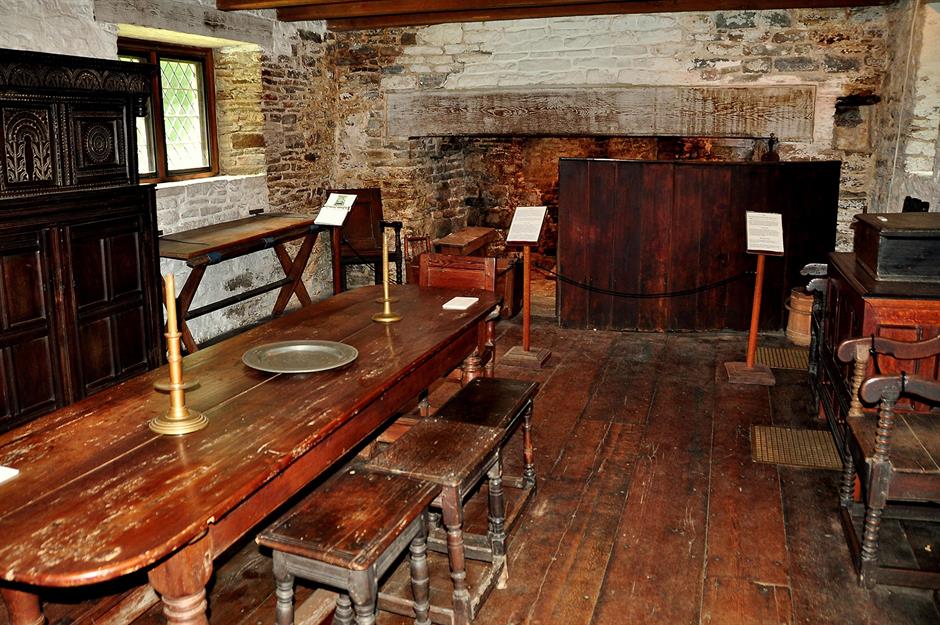
LEE SNIDER / Alamy Stock Photo
The home not only served as a place of residence for Whitfield, his wife Dorothy and their nine children but also as a place of worship before the construction of the church, a meeting house and a prospective fort in case of an attack on the colony.
The house was built of stone carted in from a nearby quarry, reportedly with the aid of the local native Menunkatuck people. This stone was in such abundance that the walls of the house measure two feet thick.
The Henry Whitfield House, Guilford, Connecticut: 1639
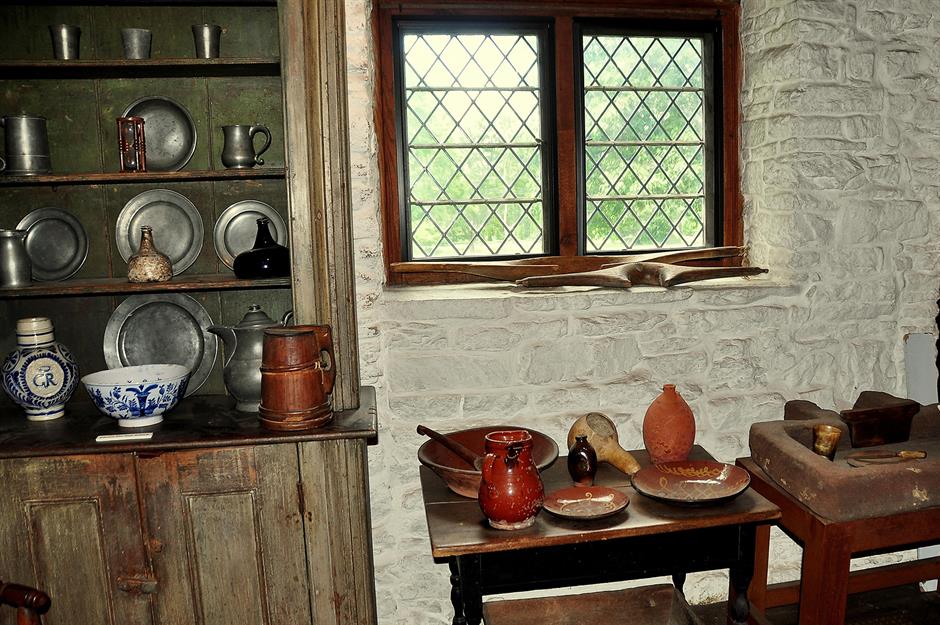
LEE SNIDER / Alamy Stock Photo
Other building materials included a mortar made from yellow clay and crushed oyster shells, hand-hewn oak timbers for the interior joists and rafters, and wide-plank pine and white wood partitions.
The overall architectural style, modelled on traditional Northern English and Scottish estates, was typical of the period. In spite of the fact that smaller rooms would have been easier to heat, the settlers followed the English tradition of large rooms, with a floor plan including an enormous great hall, kitchen and three sleeping chambers.
The Henry Whitfield House, Guilford, Connecticut: 1639

LEE SNIDER / Alamy Stock Photo
The home was owned by the Whitfields until Dorothy returned to England in 1659, following the death of her husband. The house then passed through a series of owners until 1900, at which point it became the property of the State of Connecticut.
After extensive renovations, the home was transformed into a museum and opened to the public, and is now operated by the Connecticut Department of Economic and Community Development. The Henry Whitfield State Museum, as the house is now known, was declared a National Historic Landmark in 1997, and a State Archaeological Preserve in 2006.
The Richard Sparrow House, Plymouth, Massachusetts: 1640
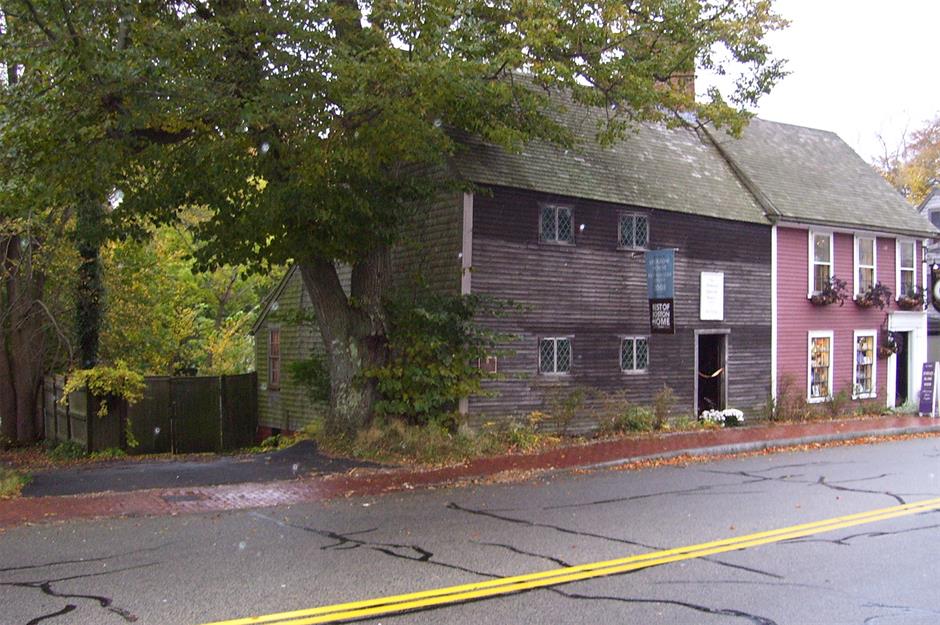
Swampyank / Wikimedia Commons [CC BY-SA 4.0]
Richard Sparrow arrived in Plymouth, Massachusetts from England in 1633, along with his wife Pandora and son Jonathan. In 1636, Richard, as a freeman, was granted a six-acre tract of land, which required him to build a house within four years.
The two-storey home is located on the banks of what is now Town Brook and features leaded-glass windows, panelled walls and cross ‘summer beam’ construction.
The Richard Sparrow House, Plymouth, Massachusetts: 1640
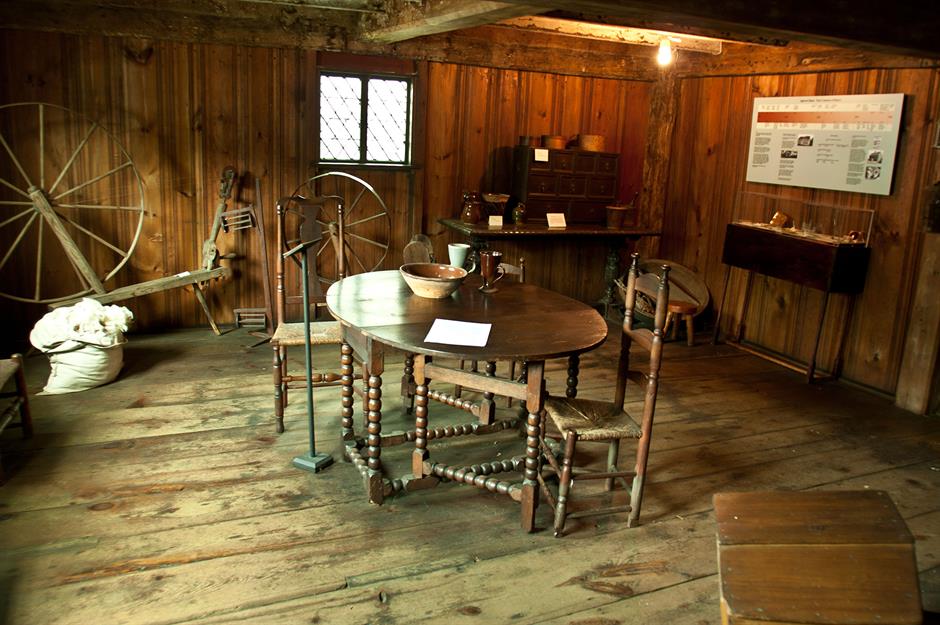
Stillman Rogers / Alamy Stock Photo
Each floor comprised only one room, but Sparrow’s family of three was very small by 17th-century standards. He was actively involved in the colony, serving as both its constable and its surveyor. By 1642, his land holdings had expanded to include an additional seven tracts.
The Richard Sparrow House, Plymouth, Massachusetts: 1640
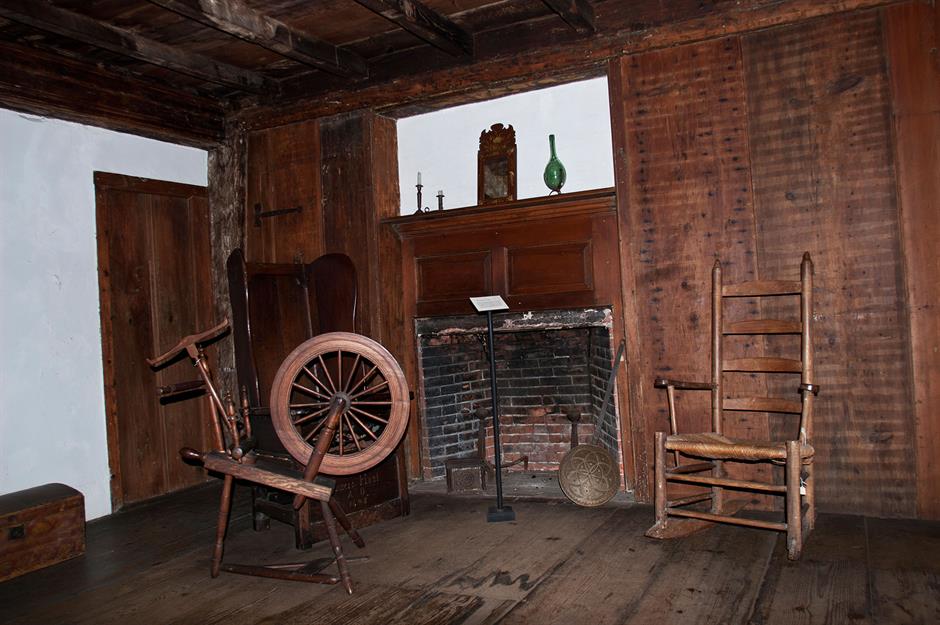
Stillman Rogers / Alamy Stock Photo
The Sparrow family continued to live in the home until 1653, whereupon it was sold to another colonist, George Bonum. The oldest house in Plymouth, the property was added to the National Register of Historic Places in 1974 and is currently operated as a house museum and art gallery as part of the Plymouth Village Historic District.
The Loomis Homestead, Windsor, Connecticut: 1640-1653
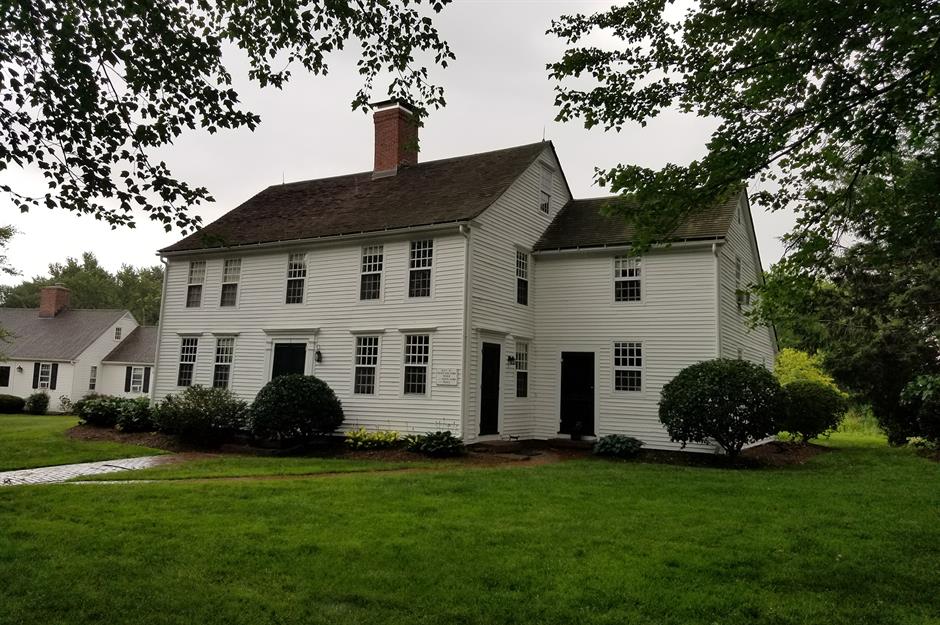
Swampyank / Wikimedia Commons [CC BY-SA 4.0]
One of the oldest timber-framed houses in America, the Loomis Homestead in Windsor, Connecticut is believed to have been built between 1640 and 1653 by the English settler Joseph Loomis, who arrived in New England in 1638.
Loomis initially built only the ‘ell’, or the smaller wing adjacent to what is now the main house, and it was not until 1688 that his son Deacon John Loomis expanded the home into its current form
Historic American Buildings Survey / Wikimedia Commons [public domain]
The building itself is a very traditional log cabin, with a centre entrance, a stone fireplace on either end of the building, a single room main floor and a lofted second storey under the low-hanging eaves.
In the early 1900s, pioneering filmmaker Siegmund Lubin used it as a filming location for several movies. The house was later used as a campsite location for a local Girl Scout troupe for several years.
Swedish log cabin, Darby Creek, Pennsylvania: 1640-1650

Library of Congress / Wikimedia Commons [public domain]
The building was partially restored in 1976, and in 1982 it was added to the National Register of Historic Places. In 1989 the building was subject to a long-overdue historical restoration and archaeological excavation, and it is now under the protection of the aptly named conservation group called the ‘Friends of the Swedish Cabin’.
Loved this? Discover the stories behind more incredible historic homes
Do you want to comment on this article? You need to be signed in for this feature
